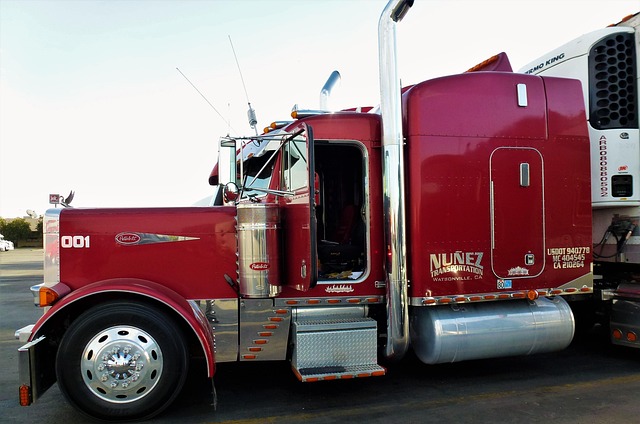Registering a car in California is a straightforward process that requires understanding key steps and gathering essential documents. This guide walks you through everything, from comprehending the state’s vehicle registration process to performing a crucial VIN (Vehicle Identification Number) verification. We’ll also detail what to do after successful registration. By following these steps, you’ll ensure a smooth and efficient car registration experience in California.
- Understanding the California Vehicle Registration Process
- Gather Required Documents for Car Registration
- Perform VIN Verification: A Step-by-Step Guide
- Submit Your Application and Wait for Processing
- Important Considerations After Successful Registration
Understanding the California Vehicle Registration Process

Understanding the California Vehicle Registration Process
In California, registering a car involves several steps designed to ensure safety and compliance with state regulations. The process begins with gathering essential documents, including proof of ownership, insurance, and identification. Once these are in order, the next crucial step is vin verification, where the unique vehicle identification number (VIN) is checked against state databases to confirm its authenticity and history. This can be done through a mobile vin verification service, providing convenience for those who prefer not to visit a DMV office.
After successful vin inspection, you’ll need to visit a California Department of Motor Vehicles (DMV) office or designated registration agency to complete the registration. Here, additional fees will be assessed, and you may be required to pass a vehicle safety inspection. With all documents in order and fees paid, your car will officially be registered, allowing you to legally operate it on California roads.
Gather Required Documents for Car Registration

Before you begin the registration process, it’s crucial to gather all the essential documents. In California, you’ll need several key pieces of information and paperwork, including your car’s Vehicle Identification Number (VIN). The VIN is a unique code that identifies your vehicle, and it plays a vital role in the registration procedure. One effective method for obtaining this detail is through a mobile vin verification service, which allows for a quick and convenient inspection right from your smartphone.
Additionally, you’ll require valid identification documents like a driver’s license or state-issued ID card. Proof of insurance coverage and a completed application form are also mandatory. It’s important to ensure that all documents are up-to-date and accurate to streamline the car registration process in California.
Perform VIN Verification: A Step-by-Step Guide

Performing a Vehicle Identification Number (VIN) verification is a crucial step in the car registration process in California. It ensures that the vehicle’s history and specifications match the information provided by the owner, enhancing the accuracy of the registration records. Here’s a step-by-step guide to help you navigate this process:
1. Obtain Your VIN: Locate your vehicle’s unique 17-character VIN code, typically found on a plate attached to the driver’s side door frame or under the hood. If you have the car’s title or registration documents, it should also be listed there. For older vehicles or those with missing documentation, consider using a mobile VIN verifier app for quick and convenient verification.
2. Choose a Mobile VIN Verifier: Many online services and apps offer mobile VIN inspection capabilities, allowing you to verify your car’s history remotely. These tools connect to national databases to cross-check the VIN against recorded information, including accident reports, title histories, and maintenance records. Some popular options include well-known mobile vin verification services that provide accurate and instant results.
3. Input Your VIN: On your chosen mobile app or online platform, enter the 17-character VIN. These platforms are designed to be user-friendly, guiding you through the process with clear instructions. Once submitted, the system will search its extensive databases for matching records.
4. Review Results: Within minutes, you’ll receive a detailed report on your vehicle’s history, including any previous owners, accident reports (if applicable), and maintenance records. Ensure all the information is accurate and up-to-date before proceeding with registration. If discrepancies are found, you may need to investigate further or address the issues with relevant documentation.
Submit Your Application and Wait for Processing

After completing your application, it’s crucial to submit it along with all required documents and fees to the California Department of Motor Vehicles (DMV). Once submitted, the DMV will initiate a process that includes verifying your vehicle’s history through a VIN verification. This step ensures the accuracy of the information provided and is typically done electronically, making it efficient and accessible.
During processing, you might be prompted for a mobile vin inspection or encouraged to conduct a vin inspection yourself to gather necessary details. Patience is key as the DMV processes applications in the order received. Ensure your contact information is up-to-date to receive any updates or notifications regarding the status of your car registration.
Important Considerations After Successful Registration

After successfully registering your car in California, there are several important considerations to keep in mind. One crucial step is performing a Vehicle Identification Number (VIN) verification to ensure that the vehicle’s details match the registration information. This process is essential for maintaining accurate records and preventing fraud. Using a mobile VIN verifier or conducting a mobile VIN inspection can simplify this task, allowing you to verify the vehicle’s history quickly and conveniently.
Additionally, it’s important to retain all necessary documentation, including registration papers, proof of insurance, and any receipts related to the registration process. These documents will be needed for future reference and may be required during vehicle transactions or when addressing any issues with the Department of Motor Vehicles (DMV). Regularly updating your contact information and ensuring that the DMV has accurate records is also vital for smooth and efficient interactions in the future.
Registering a car in California involves understanding the state’s process, gathering essential documents, and completing a VIN verification. By following these steps meticulously, including the detailed guide on VIN verification, you can ensure a smooth registration experience. After submitting your application, be patient as the process takes time. Remember to consider important post-registration tasks for a seamless ownership journey.
